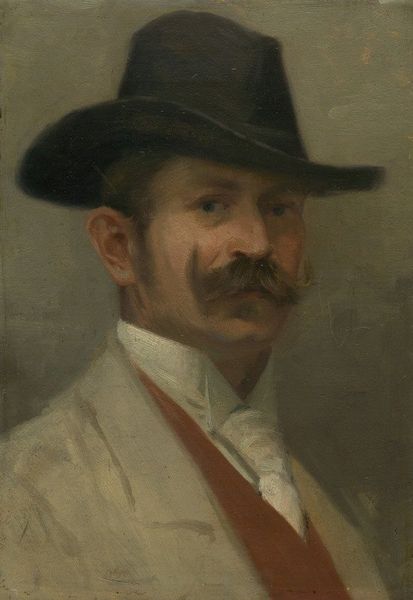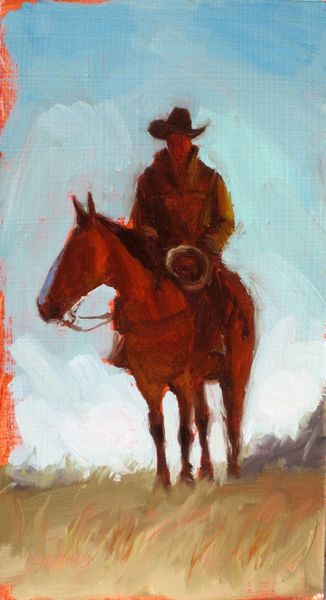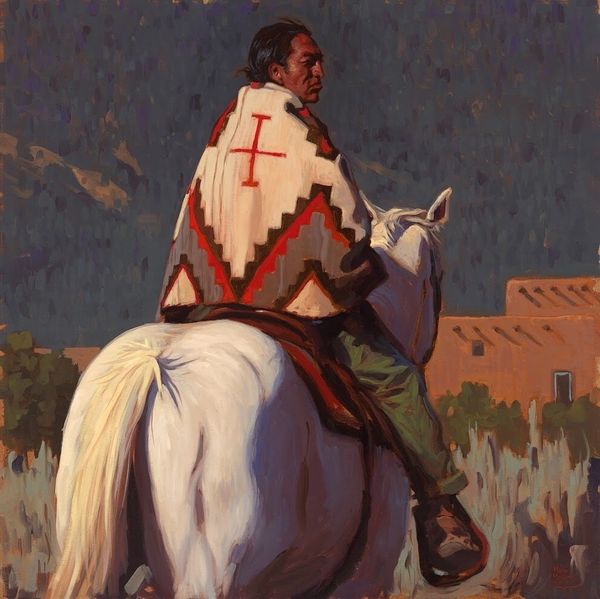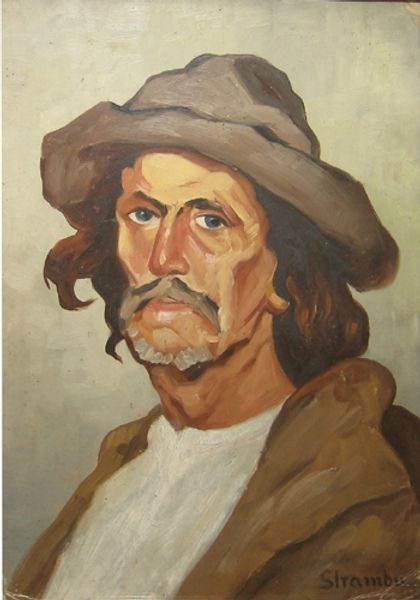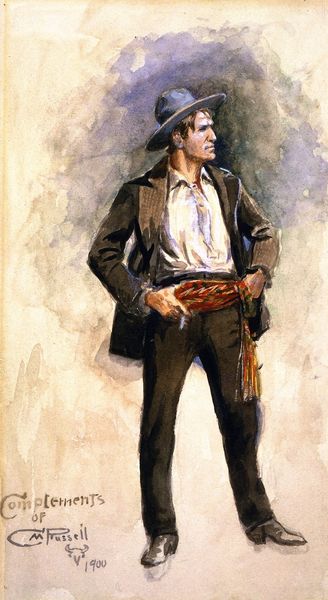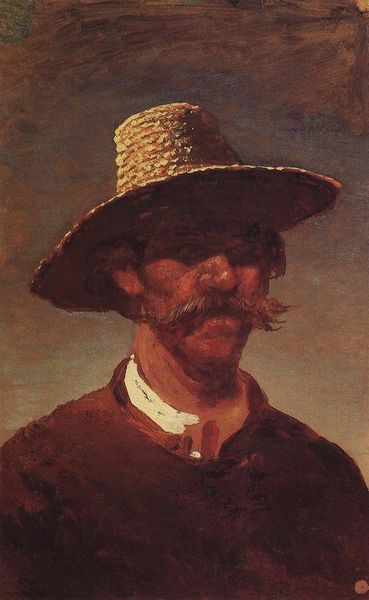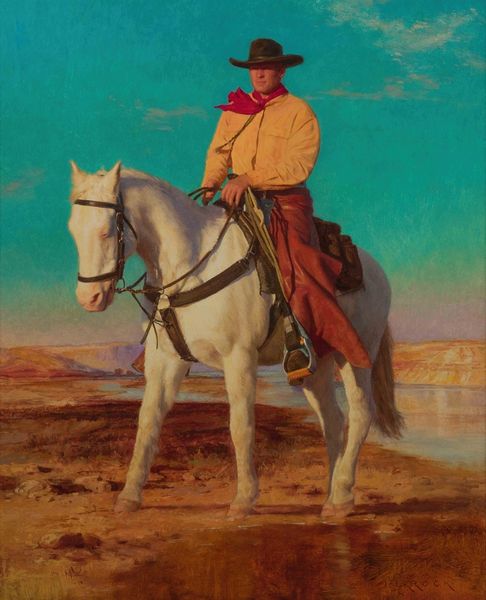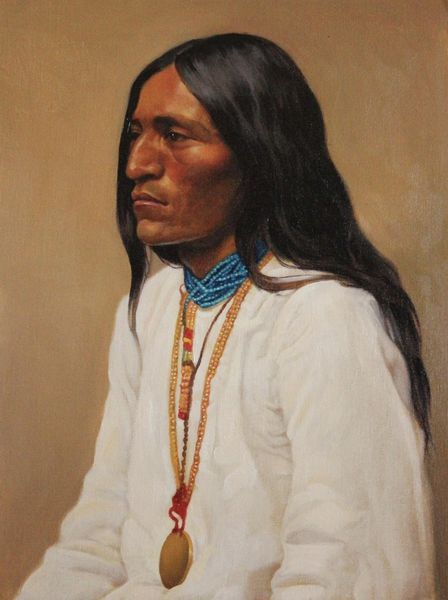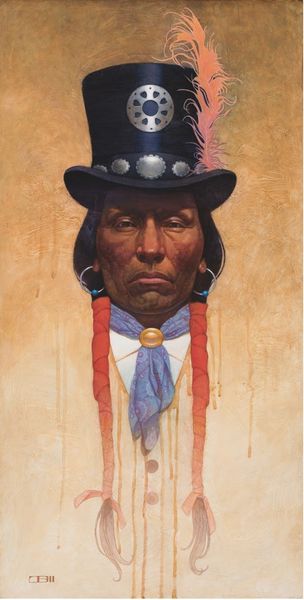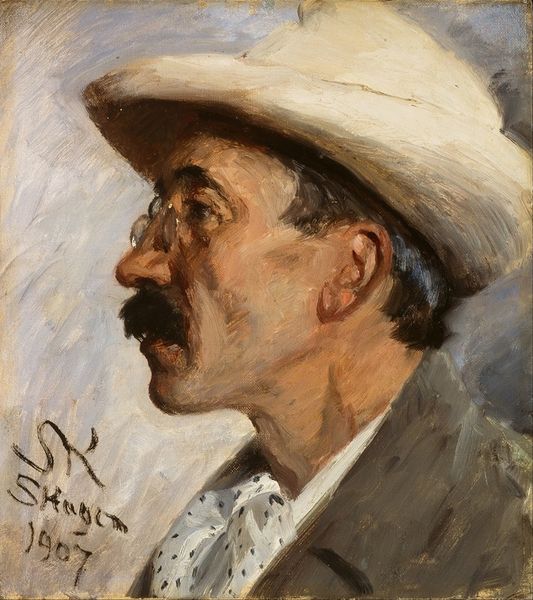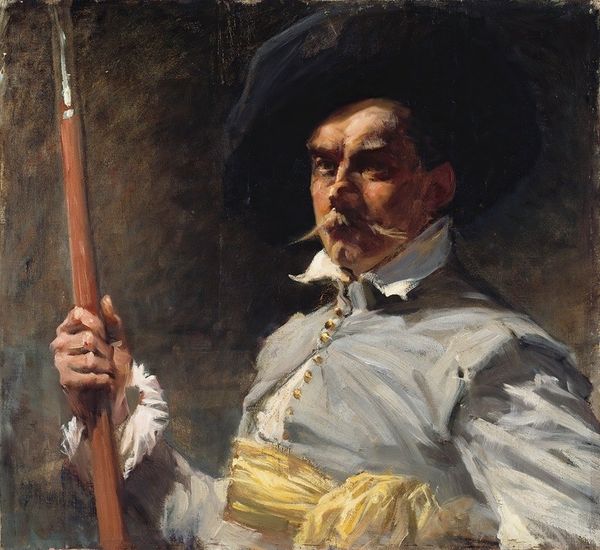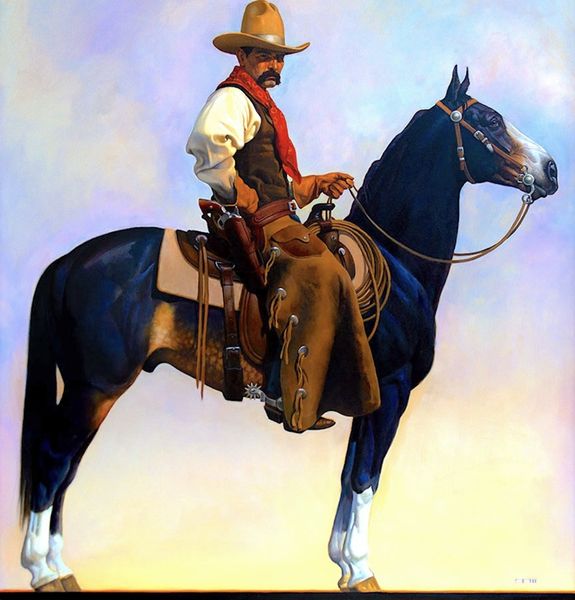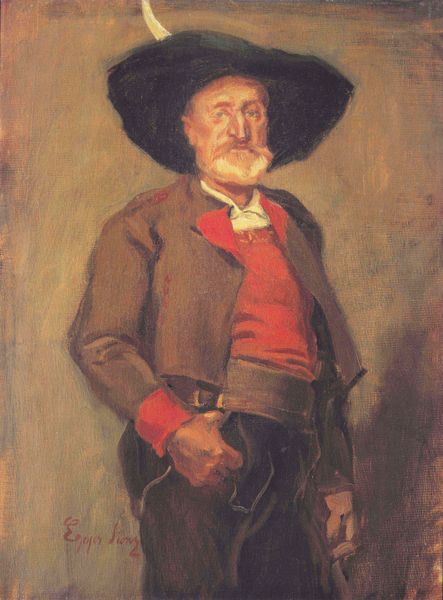
oil-paint
#
portrait
#
figurative
#
oil-paint
#
figuration
#
oil painting
#
realism
Copyright: Modern Artists: Artvee
Editor: This is Thomas Blackshear's oil painting "Buckaroo." It's a striking portrait. I'm really drawn to the details in his face and the confident gaze he seems to have, though his face is turned away from us. What jumps out at you when you see this? Curator: The gaze is important, yes, even averted. It's directed towards some distant horizon, filled with promise. It brings to mind the American West as a landscape of possibility, deeply rooted in myth-making. How does Blackshear use the "Buckaroo" figure to evoke the ideals of independence and resilience so integral to Western identity? Editor: That's interesting. I hadn't thought about the role of "Buckaroo" within the broader Western narrative. So, his clothing; how does the attire add meaning? Curator: Precisely! Let's examine the attire. The hat, for instance, adorned with a feather. Feathers symbolize connection to spirit. Then the scarf—a common practical item, but also ornamental. Blackshear seems to be aware that clothing speaks of something deeper: status, occupation, and a dialogue with Indigenous visual languages. Would you agree that Blackshear is perhaps elevating the "Buckaroo" beyond a mere cowboy figure? Editor: Yes, that makes a lot of sense. It does feel like more than just a portrait; it’s about the ideas and stories he embodies. The West itself is like a story that never stops being retold and revised. Curator: Exactly. And it makes me wonder about the cultural memory embedded within such figures. What stories are we choosing to remember and pass on? Perhaps it's about our own journey toward an ideal—forging a life in challenging terrain, or the persistent romanticism of the cowboy figure. Editor: It really highlights how one image can hold so much cultural weight. I'll definitely look at portraits differently now. Curator: Excellent. Seeing art as a mirror to our own values, memories and hopes is a great perspective.
Comments
No comments
Be the first to comment and join the conversation on the ultimate creative platform.
